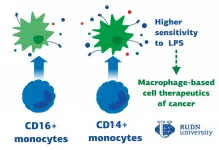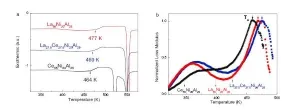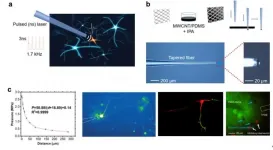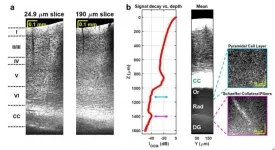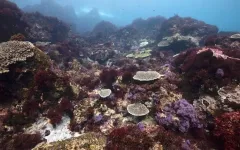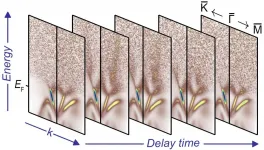Neuro-evolutionary robotics: A gap between simulation and reality
2021-07-16
(Press-News.org) Neuro-evolutionary robotics is an attractive approach to realize collective behaviors for swarms of robots. Despite the large number of studies that have been devoted to it and although many methods and ideas have been proposed, empirical evaluations and comparative analyses are rare.
A publication in the journal Nature Communications, led by Mauro Birattari and his team at the research center IRIDIA, École Polytechnique de Bruxelles, Université Libre de Bruxelles, compares some of the most popular and advanced neuro-evolutionary methods for offline design of robot swarms.
"Concretely, these methods can enable the development of humanoid robot behavior, but to my knowledge, neuro-evolutionary robotics is not yet routinely adopted in real-world applications," explains Mauro Birattari.
All of these processes use evolutionary algorithms to generate a neural network that controls the robots, i.e., a neural network that takes sensor readings as input and outputs actuator commands. These methods use computer simulations to generate a neural network appropriate for the specific mission that the robots must accomplish. Once the neural network is generated (in simulation), it is installed on the physical robots and tested.
When comparing the different methods, the researchers observed a kind of "overfitting": the design process becomes too specialized in the simulation environment, and the neural network produced fails to "generalize" to the real world. This is a reality gap, i.e. the difference between reality and the simulator used in the design process. Although the simulator is fairly accurate, differences are inevitable.
"For example, if robots need to move back and forth between two areas, one solution that the evolutionary process might find in simulation is to produce a neural network that makes the robot move along a circular path that touches both areas. This solution is very elegant and works very efficiently in simulation. When applied to robots, this solution would fail miserably: for example, if the real diameter of (one of) the robot's wheels differs slightly from the nominal value, the radius of the trajectory will be different... the trajectory will no longer pass through the two given zones as desired and as predicted by the simulation," illustrates Mauro Birattari.
The Chocolate Solution ?
Although counter-intuitive, the solution seems to be to reduce the "power" of the design method: adopt a method that can produce a limited range of behaviors... This clearly means that researchers will have to accept that they will get worse results in simulation. This method will not perform as well in simulation as a "powerful" method because it will not be able to exploit all the characteristics of the simulator... yet, the result will be more general, less specialized to the simulator and therefore more likely to generalize well to reality. The simpler the better...
The chocolate method seems a good illustration of this idea. Chocolate is a process that researchers at the IRIDIA Center proposed a few years ago and that does not belong to neuro-evolutionary robotics but that, in a similar way to neuro-evolution, automatically generates control software for robots, under the same conditions. Chocolat operates on pre-existing software modules that are low-level behaviors (e.g., I go in the direction of the light, I stop, I move away from perceived peers...) and conditions for moving from one low-level behavior to another (e.g., I am surrounded by peers, the color of the floor I am on is black...).
Instead of playing with a very powerful neural network capable of producing a wide range of behaviors, chocolate plays with predefined building blocks that are (comparatively) much more "coarse". The working hypothesis is that by doing so, the risks of "over-fitting" will be reduced...
INFORMATION:
ELSE PRESS RELEASES FROM THIS DATE:
2021-07-16
RUDN University biologists discovered the way how macrophages (the cells of the "first line" immune response) respond to inflammation and identified how the immune response depends on their origin. It turned out that when exposed to an inflammatory stimulus, two opposing mechanisms are activated in macrophages simultaneously -- inducing and inhibiting inflammation. These data can potentially be useful in the treatment of cancer, as targeted activation of macrophages will strengthen the immune response of the organism in the fight against a tumor. The results were published in the journal Biomedicine & Pharmacotherapy.
Macrophages are the cells responsible for phagocytosis -- they capture bacteria, the dead cells remains ...
2021-07-16
A collaborative group from Tohoku University and Johns Hopkins University have provided valuable insights into the glass transition.
When a liquid is cooled rapidly, it gains viscosity and eventually becomes a rigid solid glass. The point at which it does so is known as the glass transition.
But the exact physics behind the glass transition, and the nature of glass in general, still pose many questions for scientists.
Metallic Glasses (MGs) are highly sought after since they combine the flexibility of plastic with the strength of steel. They are amorphous materials with a disordered atomic structure and exhibit unique and divergent thermodynamic ...
2021-07-16
Neuromodulation at high spatial resolution has been an invaluable approach for treating neurological diseases and advancing fundamental knowledge in the field of neuroscience, as firing of a small population or even single neurons can specifically alter animal behavior or brain state. Optogenetics is a powerful method capable of modulating population neural activity in rodents, yet its requirement for viral transfection limits its applications in nonhuman primates and humans. As a rapidly growing modality, focused ultrasound has been harnessed in a myriad of brain neuromodulation applications. However, conventional piezo-based transducers offer a spatial resolution of several millimeters. It is also challenging ...
2021-07-16
JULY 15, 2021, NEW YORK - A Ludwig Cancer Research study has found that inducing random chromosome instability (CIN) events in mice for as little as one week is enough to trigger harmful chromosomal patterns in cells that spur the formation of tumors.
"We show that you don't need chronic, lifelong chromosomal mistakes to produce tumorigenesis at a quite respectable frequency," said Don Cleveland, Member of the Ludwig Institute for Cancer Research, San Diego, who led the study with Floris Foijer of the University of Groningen, in The Netherlands. "A very transient exposure would likely be sufficient to drive a very substantial increase in tumorigenesis."
The finding, detailed this week in the journal END ...
2021-07-16
Washington, DC / New Delhi, India - Researchers at CDDEP recently published 'Improving vaccination coverage and timeliness through periodic intensification of routine immunization: evidence from Mission Indradhanush' where they evaluated the performance of India's Mission Indradhanush (MI) child vaccination campaign -- a periodic intensification of the routine immunization program.
Each year, 1.2 million Indian children die, accounting for a fifth of global under-5 deaths. Over 400,000 of these deaths are from vaccine-preventable diseases. An estimated 38% of Indian children under the age of two years were not-fully-immunized in 2016. Additionally, vaccinated children received 23%-35% of the doses of polio, diphtheria-pertussis-tetanus ...
2021-07-16
Main points
Strong evidence that patients with pre-existent mental disorders are twice as likely to die or be hospitalised after SARS-CoV-2 infection
Psychotic and mood disorders are linked with COVID-19-associated mortality, as are exposure to antipsychotic and anxiolytic treatments.
Patients with substance use disorders are at increased risk of hospitalisation.
In the largest systematic review and meta-analysis to date on COVID-19 outcomes in individuals with psychiatric disorders, the odds of dying or being hospitalized following COVID-19 ...
2021-07-16
The team's findings, with important implications for ocean biogeochemistry and climate science, have been published by Nature Communications in a paper by Associate Professor Mark Holzer from UNSW Science's School of Mathematics & Statistics, with co-authors Tim DeVries (UCSB) and Casimir de Lavergne (LOCEAN).
"The deep North Pacific is a vast reservoir of remineralized nutrients and respired carbon that have accumulated over centuries," says A/Prof. Holzer. "When these deep waters are returned to the surface, their nutrients support biological production and their dissolved CO2 can be released into the atmosphere. As such, the deep Pacific plays a key ...
2021-07-16
Central nervous system (CNS) diseases such as Alzheimer's disease (AD) manifest early at the microscopic (i.e. cellular) level, deep in the brain. Yet, optical microscopes that can see cells in the living brain are superficial or invasive. Whole brain imaging techniques such as magnetic resonance imaging are deep and non-invasive, but lack cellular resolution.
In a new paper published in Light Science & Application, a team of scientists, led by Professor Vivek J. Srinivasan from the Departments of Ophthalmology and Radiology and Tech4Health Institute, ...
2021-07-16
Shizuoka, Japan - At Shikine Island, Japan, kelp forests and abalone fisheries were once common, but over the last twenty years they have disappeared. Now, researchers from Japan have discovered that these temperate coastal marine ecosystems are becoming more "simple", losing biodiversity, complexity and their aesthetic values.
In a study published this month, researchers from the University of Tsukuba and international collaborators explored how the combined effects of ocean warming and acidification are changing temperate coastal marine ecosystems.
Tropical coastal seas are synonymous with coral reefs. As ocean temperatures cool toward the poles, corals give way to kelp as the main habitat-forming species. The shift from coral to kelp can clearly be seen along the 2000 km ...
2021-07-16
The laws of quantum physics rule the microcosm. They determine, for example, how easily electrons move through a crystal and thus whether the material is a metal, a semiconductor or an insulator. Quantum physics may lead to exotic properties in certain materials: In so-called topological insulators, only the electrons that can occupy some specific quantum states are free to move like massless particles on the surface, while this mobility is completely absent for electrons in the bulk. What's more, the conduction electrons in the "skin" of the material are necessarily spin polarized, and form robust, metallic surface states that could be utilized as channels in which to drive pure spin currents on femtosecond ...
LAST 30 PRESS RELEASES:
[Press-News.org] Neuro-evolutionary robotics: A gap between simulation and reality
